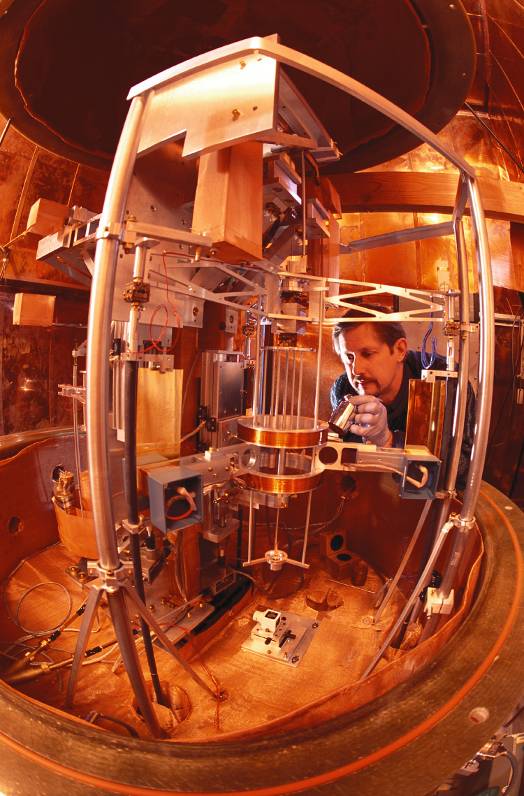This article is more than 1 year old
Glorious silicon globes could hold key to elusive PERFECT kilogram
El Reg drills into why we need an ultra-accurate mass
Splitting a speck of dust
No one knows why Robinson's balance in Canada and the NIST balance in the US can't agree.
"Most of the checks have been carried out - everybody has done the straight forward stuff, it's now down to some very subtle things in the apparatus," Robinson said.
The differences between the results are infinitesimal yet signficant. Earlier this year Robinson achieved a value of 6.626071 x 10-34 joule seconds using the balance now at INMS. The NIST value, from 2007, is 6.626068 x 10-34 joule seconds.
John Pratt, group leader of NIST's fundamental electrical measurement group, said the gap between the two devices translates to a difference in the measured mass of 250 parts per billion; the CGPM committee wants 20 parts per billion. To give an idea of scale, the kilogram masses in Paris have changed by 50 parts per billion in just over 100 years.
Pratt, who succeeded NIST physicist Richard Steiner on the project, told us 40 parts per billion would be "fine", adding: "At 20 parts per billion, it becomes more difficult to transport the test mass around the world and have it be reliable. It's a dust speck on the mass at that level."

Steiner adjusting the NIST's watt balance. Credit: Robert Rathe, NIST
In a watt balance, a coil of wire is suspended in a magnetic field, and electric current is passed through the coil - this causes the coil to move downwards with a force proportional to the current. The coil is attached to one end of a balancing beam and the mass under test is attached to the opposite end, so that the coil's downward force acts as a counterweight to the normal gravitational pull on the test object. When the force, plus the weight of the coil, matches the weight of the object, the current can be recorded.
In the second phase of the experiment, the mass is removed and the coil glides through the same magnetic field at a constant speed, and the voltage generated in the coil by this movement is measured. Planck's constant can be calculated from these two electrical values.
You can get more details on the maths involved from the NPL website here and the NIST website here.
There, though, the similarities between the devices end. Robinson's balance used wires to support the coil while the other has solid arms; the NIST machine is huge - spanning two floors - while the NPL-designed machine sits neatly on a work surface, two metres tall and long, and one meter wide; NIST employs a superconducting solenoid to generate its magnetic field while the NPL-designed balance uses a permanent magnet made of neodymium-boron - a type of rare earth used in electrical motors and hard-drive heads. Also, Robinson's machine, now at INMS, measured a 0.5kg mass not 1kg, supposedly for greater accuracy.
"The trouble is if anybody actually knew what the problem is, they could fix it. The problem is quite deeply buried in the apparatus," Robinson said. "That means they have to make as many checks as possible to see where the problem might lie."
Robinson, who led NPL's watt balance work, said that, for example, he identified small unwanted motions of the balance and its support as the test mass was placed in and removed from its holding pan; these are the sorts of tiny mechanical problems that the scientists must mitigate or remove completely.
Building a watt balance is an expensive process; one will set you back $1m according to NIST, and Robinson made two with NPL colleague Bryan Kibble, who first proposed the watt balance system in 1975. A Mark-III model of the measurement machine was designed by NPL between 2003 and 2006, but it was not built as the lab closed its experiment in 2007 and sold the equipment to the Canadian institute in 2009.
INMS has since implemented changes suggested by Robinson: the balance arm was tilted and shortened to change the way the mass is raised and lowered. Also, rods replaced the wires to suspend the coil.
NIST has pressed on: boffins removed superfluous wiring and inspected connections to track down and close holes where current may leak. New team members were also brought in a year ago. "This experiment is a point where it needed fresh eyes," Pratt said. "Extremely talented and experienced fresh eyes."
